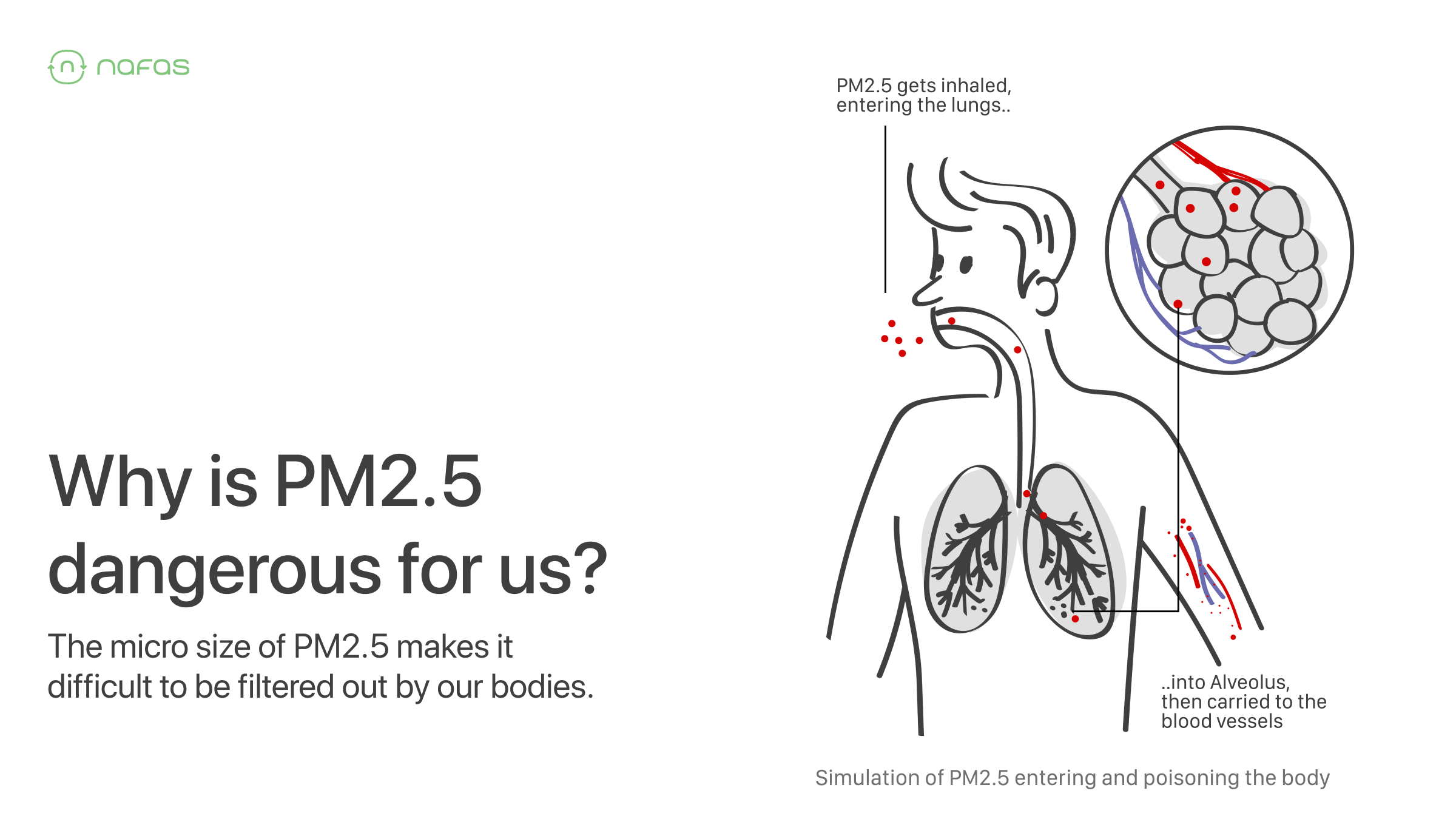Why Closing Your Windows and Doors Aren’t Shielding You From Air Pollution
Homes are designed to protect us from harmful elements such as outdoor air pollution. Since we spend most of our time indoors and frequently at home, exposure to indoor air pollution can be a concern. Air pollutaSnts from both indoor and outdoor sources deteriorate building air quality.
How could that be?
PM2.5 is incredibly small and can seep into buildings

Less than 2.5 micrometers in diameter, PM2.5 stays in the air longer and is difficult to settle to the ground. These particles can easily infiltrate your room invisibly. According to one study, 54-63% of PM2.5 pollutants in buildings come from outside, even when windows and doors are closed. Another study revealed that particles generated outside accounted for 80% of indoor PM2.5 concentrations on average, with a range of 40-100% in individual residences.
Well, the percentages sound huge and alarming.
How did they enter the building so effortlessly?
PM2.5 enters your room through cracks and holes in buildings
Outdoor PM2.5 can infiltrate buildings through windows, doors, and even with closed windows. Outdoor air pollutants can enter the building through leakage, openings, joints, and cracks in walls, floors, and ceilings around windows and doors. Wind and the difference in temperature between indoor and outdoor air both contribute to the movement of air into the building. Aside from that, air pollutants can come inside through exhaust fans which are generally located in bathrooms, kitchens, or underground parking areas.
So, is it okay to live with air pollution inside our room?
PM2.5 indoors can be fatal to our health
Children, the elderly, and those suffering from long-term illnesses are frequently the most vulnerable to the effects of indoor air pollution. Indoor pollution can be dangerous to one's health because humans spend at least 90% of their time indoors. PM2.5 in the air can be inhaled and cause health issues. These particles can pass through the alveoli in the lungs and are carried throughout the body by the bloodstream.
There are 6 out of 10 homes that are hazardous to their occupants' health. In fact, indoor air pollution levels can be 2-10x higher than outside. When compared with outdoor air pollution in Jakarta, it can be said indoor PM2.5 levels on average in Jakarta would be 80-400 µg/m3. People who breathe them in, especially vulnerable groups, can develop allergies, sneeze, and even have poor sleep quality.
Yet, air quality limits currently only apply to outdoor environments.
Is there any simple way to check the indoor air quality?
Monitor indoor air quality with your Air Purifier
Since people spend most of their time indoors, knowing what the air quality is like inside our homes can guide you to make decisions both short-term (such as temporarily relocating or using air purifiers) and long-term (such as making home improvements or even moving house).
Monitoring indoor air quality can help you reveal the level of air pollution in your room. A home indoor air quality monitor, is intended to help you in tracking and understanding the air where we spend most of our time. Data from the indoor air quality monitor can be accessed, which allowing you to compare how safe our indoor air is to outside.
You can consider using an air purifier to improve the air quality inside your home or workplace. An air purifier will help you optimize indoor air quality and it will also keep your room air quality clean, safe, and healthy. With its pre-filter, a HEPA filter, and an activated carbon filter, it protects you from harmful particles, smoke, mold, dust, and bacteria. 
✅ If you want to learn more about indoor air purification, you can read it here.
References:
Lin, Y., Zou, J., Yang, W., & Li, C. Q. (2018). A Review of Recent Advances in Research on PM2.5 in China. International journal of environmental research and public health, 15(3), 438. https://doi.org/10.3390/ijerph15030438.
US EPA, OAR. (2015). Why Indoor Air Quality is Important to Schools | US EPA. US EPA. https://www.epa.gov/iaq-schools/why-indoor-air-quality-important-schools.